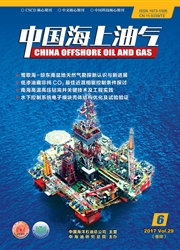

 中文摘要:
中文摘要:
白云深水区具有复杂而特殊的地质条件:位于中生代俯冲带的构造软弱带、新生代减薄的洋陆过渡地壳和新生代盆地构造转换带,具有特殊的构造演变背景;经历了“断陷-断拗-拗陷”的沉积充填演化历史,形成了三层盆地结构;渐新世以来受到南海扩张的影响而持续沉降,具有与全球海平面变化相反的台阶式海侵型相对海平面变化特征,总体形成下粗上细的沉积充填序列。白云深水区渐新世为浅海陆架环境,发育三角洲沉积,渐新世末(23.8Ma)发生重大地质事件从此成为深水陆坡环境,发育大型珠江深水扇系统沉积。这些地质条件无疑控制和影响了白云深水区构造演变、沉积充填和油气成藏。正确认识白云深水区的基础地质条件,将有利于指导深水油气勘探。
 英文摘要:
英文摘要:
Baiyun deep-water area is quite complex and unique in geology. There is a particular setting of tectonic evolution because it was located in a Mesozoic tectonic weak zone of subduction and a Cenozoic tectonic transfer zone between a thinned crust of oceanic-continental transition and a basin tectonics..After a depositional evolution history of "rifting, fault-sagging and sagging", a three-level framework of basins was formed in the area. Since Oligocene, a continuous subsidence due to the spreading of South China Sea has resulted in stepped transgression sea level changes contrary to the global relative change of sea level and a generally fining-upward depositional sequence. During Oligocene, Baiyun area was a continental shelf, with delta sediments developed. After a major tectonic event at the latest Oligocene (about 23.8 Ma), Baiyun area changed into a deep slope where the large dee-water fan system of Pearl River formed. All these geologic conditions have undoubtedly control and affect tectonic evolution, depositional filling and hydrocarbon accumulation in the area. Therefore, collect knowledge of the basic geology in Baiyun area may be helpful to oil and gas exploration in deep-water areas.
 同期刊论文项目
同期刊论文项目
 同项目期刊论文
同项目期刊论文
 期刊信息
期刊信息
